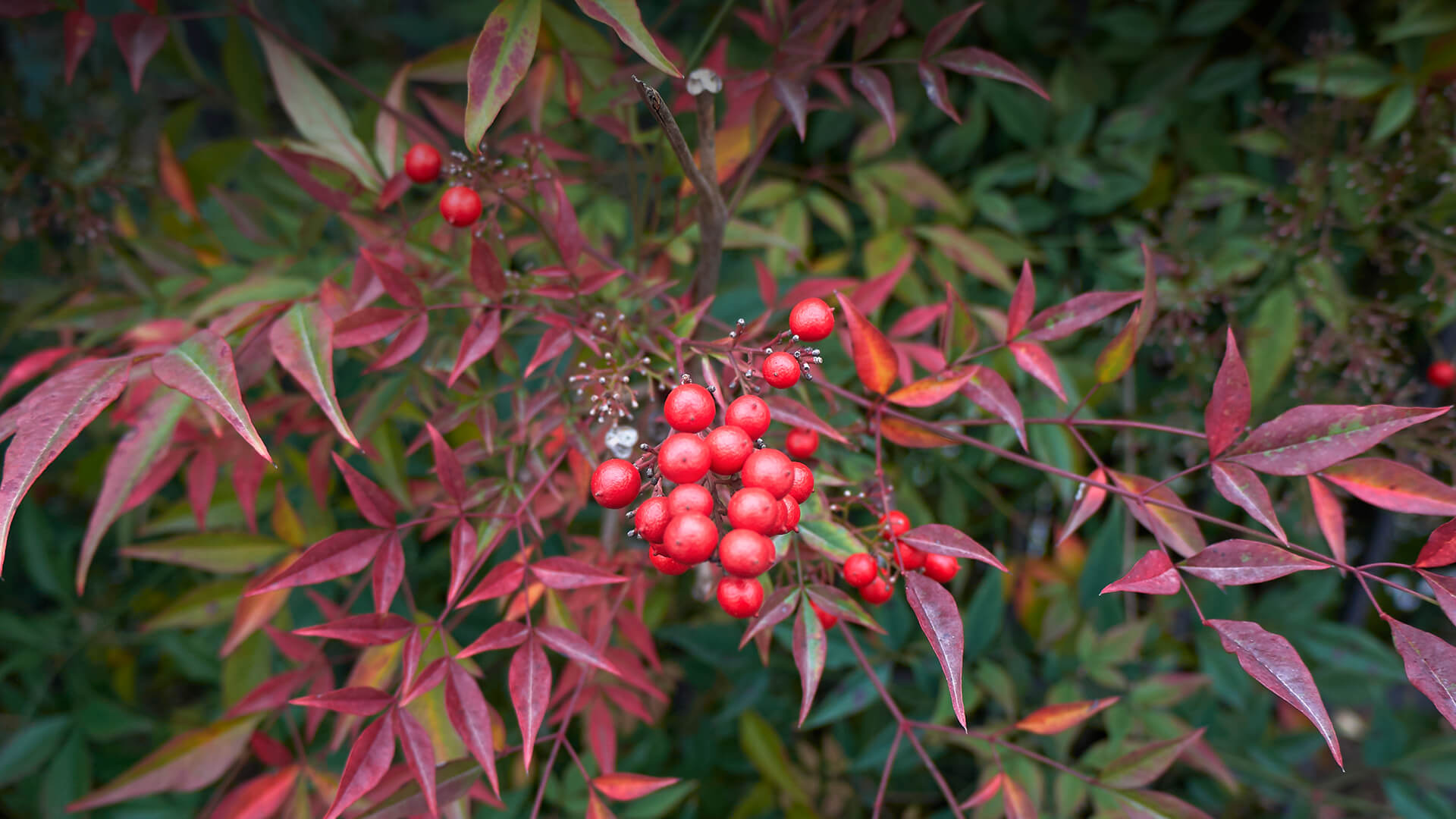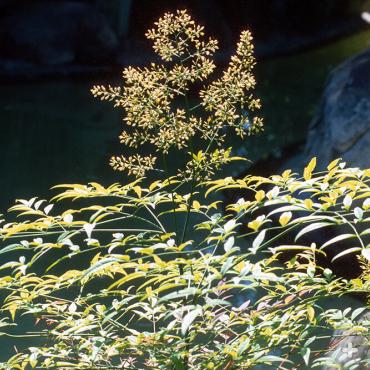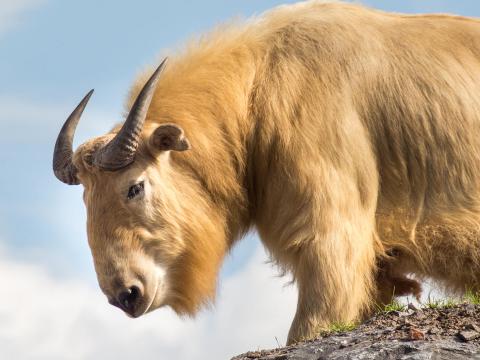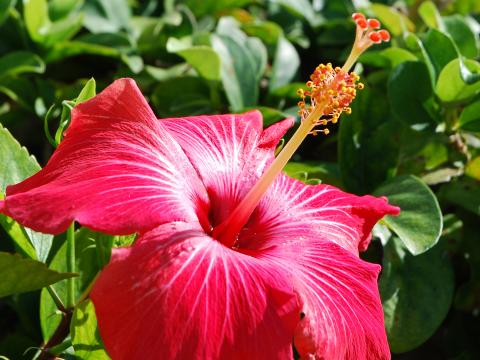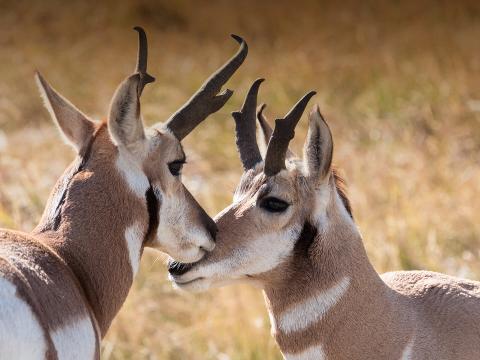Heavenly Bamboo
- Division: Tracheophyta
- Class: Magnoliopsida
- Order: Ranunculales
- Family: Berberidaceae
- Genus: Nandina
- Species: domestica
OVERVIEW
Heavenly, yes—but this leafy shrub is no bamboo. Its lacy leaves and cane-like stems bear a resemblance to its namesake, but heavenly “bamboo” is a member of the barberry family (Berberidaceae), not the grass family (Poaceae). Though it’s ubiquitous throughout most of the continental US, heavenly bamboo is native to Asia. It arrived here in the early 1800s, as an ornamental landscaping plant, and it’s just as prized today as it was then. Heavenly bamboo’s flowers, berries, and color-changing foliage make it eye-catching year-round in most places where it grows. Its sweet nectar attracts bees and other pollinators.
CHARACTERISTICS
Bright yellow inner bark is a family trait of the Berberidaceae, a result of compounds known as berberine alkaloids. This bamboo typically grows as a perennial, woody shrub, but in some colder areas, it drops leaves in the winter. Multistemmed, it spreads by underground rhizomes, and in good conditions can form dense thickets. Leaves are tri-pinnately compound—they divide, and then divide again. An entire leaf can be longer than 15 inches (38 centimeters), but individual leaflets are just an inch or 2 (3 to 5 centimeters) long. New leaves are a bit pinkish, soon turning green, and then—in autumn—reddish. In springtime, clusters of small, creamy white flowers bloom at the end of stems. By September, the shrub bears bunches of small red berries that often last throughout the winter.
CULTIVATION
A low-maintenance member of the garden, heavenly bamboo tolerates a variety of soil types and is fairly drought-tolerant once established. Still, it does best in moist, fertile soil. Plant it in partial shade to full sun, and prune it carefully in the winter or early spring by thinning out the oldest stems. You can also trim the stems at various heights for a bushier look. You’ll find heavenly bamboo in mixed borders, or forming screens or informal hedges. This resilient plant can withstand temperatures of 10 degrees Fahrenheit (-12 degrees Celsius), but at temperatures like that, it loses its leaves until springtime.
CONSERVATION
While heavenly bamboo is not threatened, it does pose a threat to native plants in some parts of the southeastern US, where it naturalizes. Suckers spring from underground rhizomes, and berry-eating birds spread seeds. In some areas, thickets of heavenly bamboo displace native vegetation. (In Florida, it is categorized as a category 1 invasive exotic.) Most varieties of heavenly bamboo are not recommended if you live in these regions, but several fruitless cultivars have been developed, and these are a better choice.
Heavenly bamboo can pose a threat to native birds, too. When food is plentiful, many seem to be able to safely supplement their diet with a few of the red berries, but when other food is scarce, birds have been known to die from eating too many Nandina berries—a result of their cyanide content. You can prevent this by pruning the berry-laden stems if birds frequent your plants.

